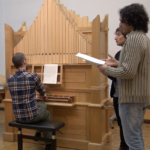Contributor Essays
Microtonal Keyboard Instruments in Early Modern Europe
by Leon Chisholm
June 20, 2018
The standard interface of pianos, organs, and other keyboard instruments, with its pattern of twelve interlocking keys, is a compromise by design. The twelvefold division of the scale into fixed pitches has both shaped and served Western music since medieval times. Yet the notes of this scale form pitch relationships that, for the most part, only approximate the intervals of the natural harmonic series. Over the centuries, scientists, inventors, instrument makers, composers, and musicians have explored myriad ways of accommodating and even overcoming this discrepancy.
One strategy for mitigating the limitations of the standard keyboard’s twelve-tone octaves has been to add extra notes to create within the keyboard’s scale microtonal divisions, or intervals smaller than a semitone (the distance between two adjacent notes on the piano). Consideration of some notable early modern examples of microtonal keyboards, including those associated with Nicola Vicentino and Gioseffo Zarlino, can help to contextualize later developments in the nineteenth and twentieth centuries, when microtonal instruments served a variety of aesthetic, philosophical, and scientific ends.
Microtonal keyboards originated as a solution to a design limitation of the standard keyboard. To help illuminate the practical nature of microtonal keyboards in early modern music, let’s consider some of the peculiarities of keyboard temperaments then and now. Quarter-comma meantone (or, simply, meantone) was the most widely used temperament system for keyboard instruments, including organs, clavichords, and harpsichords, in the sixteenth and early seventeenth centuries. Equal temperament is the tuning system used nowadays for most instruments of Western art music, including pianos. On the modern piano, each single “black” key has two names. For instance, the key between D and E can be called either D-sharp or E-flat. The double name of the key signals that it is used to play notes that are spelled as D-sharp as well as those spelled E-flat. In other words, the pitch classes of D-sharp and E-flat are treated as enharmonic equivalents in equal temperament (as are C-sharp / D-flat, F-sharp / G-flat, G-sharp / A-flat, and A-sharp / B-flat)—simply put, in equal temperament, D-sharp and E-flat sound identical. However, in the natural harmonic series, D-sharp and E-flat denote two distinct pitches, D-sharp being slightly lower than E-flat. In equal temperament, D-sharp and E-flat merge into a compromise pitch that represents neither purely, both sound “out of tune” (and the same can be said for the other four enharmonic pairs listed above).
By contrast, in meantone temperament, D-sharp and E-flat (or F-sharp and G-flat, etc.) remain two distinct pitches. In practice, this means that one of the two notes must be left out, at least on keyboard instruments with twelve notes per octave. The notes that are retained are E-flat, F-sharp, G-sharp, B-flat, and C-sharp. The others (D-sharp, G-flat, A-flat, A-sharp, and D-flat) are simply not included in the keyboard’s scale. The benefit of this system is that certain intervals, specifically major thirds, are pure or just. The tradeoff is that the system cannot accommodate music that uses the excluded notes. Consequently, it constrains the player to a limited number of keys. Whereas equal temperament enables the player to play in twelve major keys and twelve minor keys, meantone effectively limits the possible keys to five major keys (C, D, F, G, and A) and three minor keys (D, G, and A). Early modern musicians recognized that one of the major disadvantages of this system was the limitations it placed on the capacity to transpose, or to play a given piece of music in different keys. Yet transposition was (and still is) a very beneficial technique in accompanying singers, as it enables the accompanist to move the music into the key that best suits the singers’ vocal ranges.
A common solution to this problem involved adding extra keys to the twelve-note-octave keyboard. This involved restoring one or more of the chromatic pitches left out of the twelve-note meantone scale (D-sharp, G-flat, A-flat, A-sharp, D-flat). This strategy not only afforded the keyboardist a greater array of options for transposition, but also retained the just major thirds of meantone temperament. The incorporation of “extra” keys is a feature that is almost as old as the modern twelve-note keyboard itself, with evidence dating as far back as 1468. Indeed, from the late fifteenth to the eighteenth century, it was not uncommon for one or more of a keyboard instrument’s chromatic keys to be split horizontally, such that the front and back of the key activated different pitches. As just one example of many, this seventeenth-century German clavichord preserved at the Deutsches Museum in Munich includes a split key between D and E in the middle and tenor octaves of the keyboard. On this clavichord and other keyboard instruments like it, the front half of the split key would normally be tuned specifically as an E-flat, while the back half of the key would be tuned slightly higher, as D-sharp. The presence of the D-sharp expanded the tonal spectrum available to the keyboardist to include the keys of E minor and E major.
While the clavichord linked above has just one split key per octave, other keyboard instruments could have two, three, four, or even five. An example of five split keys—all the chromatic keys—can be seen on the organ in the Frauenkirche in Bressanone (Brixen), Italy. This seventeen-note meantone octave was installed by builder Daniel Herz during a renovation of the organ in 1649. The extra notes effectively allow the player to transpose between eleven major keys and eight minor keys. Still more notes were sometimes included in the octaves of certain keyboard instruments around this time. In Italy, there existed harpsichords with nineteen notes per octave (all seventeen notes of the Brixen organ plus additional keys for E-sharp and B-sharp). This type of harpsichord was prevalent enough that the Neapolitan composer Giovanni Maria Trabaci (c. 1575–1617) referred to it as the cimbalo cromatico comune (common chromatic harpsichord).
In the cases described so far, expansions of the scale are relatively conservative. They amount to ad hoc compromises between the material constraints of the keyboard instrument and the affordances of voices and other instruments which the keyboard supports. In other instances, however, the addition of extra keys served a more radical purpose. The archicembalo and arciorgano (“arch”-harpsichord and -organ) invented by the priest-musician Nicola Vicentino (1511–1575/76) are two early examples of microtonal keyboards that were aimed at reforming the known tonal universe.
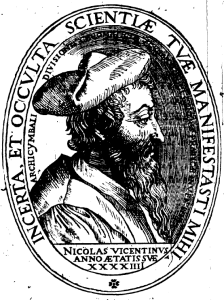
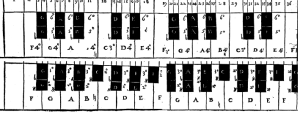
Specifically, Vicentino desired to expand the gamut to include intervals composed not only of tones and semitones but also microtones. He couched this reform in the humanistic rhetoric of restoring all three genera of the tetrachord of ancient Greek music: the diatonic, chromatic (both of which were already in use), and the enharmonic (which was not). Vicentino’s vision of this expanded tonal universe, which he describes in his treatise L’antica musica ridotta alla moderna prattica (1555), involved acclimating musicians’ ears and voices to enharmonic intervals. The archicembalo and arciorgano were Vicentino’s primary tools in this endeavor. The scales of the two instruments are identical, comprising thirty-six physical keys that are organized into two keyboards, each with three row of keys. The Venetian organ builder Vincenzo Colombo built these instruments on Vicentino’s commission. No historic specimen survives, but thanks in part to diagrams and descriptions that Vicentino published in L’antica musica and in another document, Descrizione dell’Arciorgano (Venice, 1561), modern reconstructions have been possible.
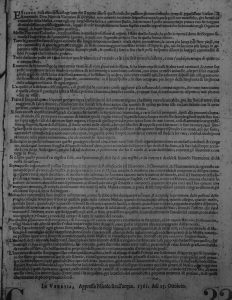
For the tuning of these instruments, Vicentino recommended two temperaments, the first of which harnesses thirty-one of the keys, and the second of which involves all thirty-six. Very little sixteenth-century music that makes use of enharmonic intervals survives (a collection by Vicentino that likely did contain such music is lost). Nonetheless, the threefold expansion of the divisions of the octave permits an approximation of just intonation, allowing the keyboardist to play triads comprising pure or nearly pure intervals. Thus, though Vicentino’s arch-keyboards were instruments of a utopian vision that never materialized, they still had great practical value, as they could rehearse and accompany polyphonic vocal music without sacrificing pure (or close to pure) harmonies. The ongoing work of Johannes Keller and collaborating musicians has demonstrated the particular usefulness of the arciorgano in the rehearsal of difficult, chromatic repertoire, such as the madrigals of Salamone Rossi.
Though contemporary to the archicembalo and arciorgano, the twenty-four-note-octave microtonal harpsichord owned by Gioseffo Zarlino (1517–1590) served a slightly different purpose. Zarlino, one of the most prominent music theorist of sixteenth-century Europe, mentions this harpsichord in the second volume of his best known treatise, Le Istitutioni harmoniche (1558). The reference comes in the context of a discussion of the monochord, a simple, multipurpose instrument that was used for the training of singers as well as for acoustical experiment. Zarlino describes how to augment a diatonic monochord first with chromatic strings and secondly with enharmonic strings in order to obtain “perfect consonances.” He mentions that he had an instrument built that features such an arrangement of strings by the instrument maker Domenico da Pesaro at Venice in 1548. Zarlino describes the instrument as akin to a touchstone (“quasi simile alla Pietra, che si esperimenta l’oro & l’argento”): as a touchstone reveals the purity of gold and silver, the microtonal harpsichord reveals (in sound) the “lost” intervals of ancient Greece.
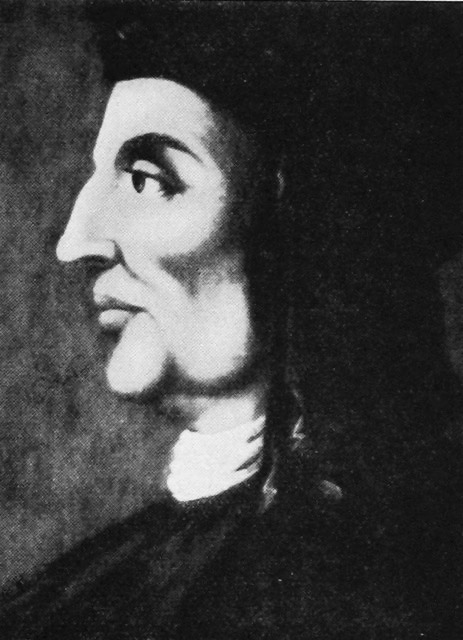
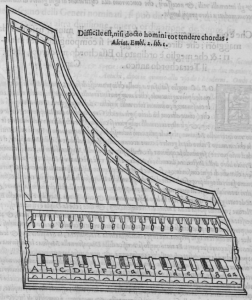
For Vicentino, microtonal keyboards helped to carry out the “activist” agenda of substantially altering music as it was then known—an objective that Vicentino justified as the restoration of the Greek genera. For Zarlino, on the other hand, the purpose of the microtonal keyboard was more strictly one of discovery, in allowing listeners to hear the sound of ancient intervals. These two distinct uses underscore the microtonal keyboard’s dual role as an instrument for scientific investigation and musical practice in early modern Europe. Microtonal keyboards thus served as a bridge at the material level between science and aesthetics and between historical and modern sound.
The archicembalo and arciorgano of Vicentino and the twenty-four-note-octave harpsichord of Zarlino have recently been reconstructed by Studio 31, a research group based at Schola Cantorum Basiliensis. The reconstructed instruments are important for the opportunity they afford musicians and musicologists to investigate aspects of Zarlino’s theory and Vicentino’s musical idiom through tools that the theorists themselves used. The results underscore that early modern microtonal keyboards cannot simply be dismissed as a fringe development. They addressed very real problems related to tuning. And, for researchers today, the reconstructions can help us better understand the role of keyboard instruments in general (not only microtonal ones) in bridging science and art.


